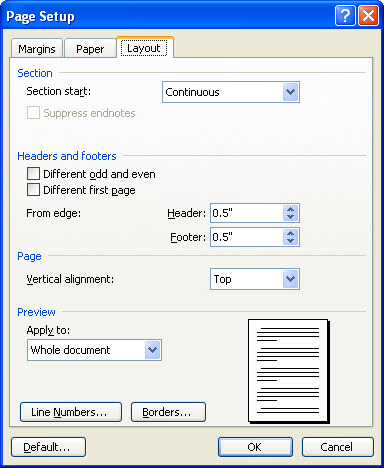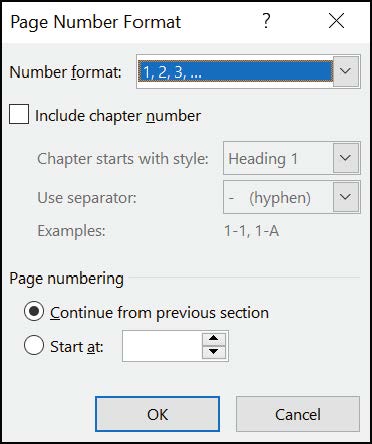
It’s common to find draft documents with paragraphs numbered so that people can refer to each by that number (“We mention government oversight in paragraphs 6, 7, 9 and 12”). Since there’s line numbering in Word, you’d expect to also find a paragraph numbering option. These samples are usually formatted with a special style (fixed space font, indent and a special color) to which automatic line numbering would be very useful. That’s a curious omission since Microsoft developers themselves should be aware of one common use for line numbering – in samples of computer code. However styles can’t enable the line numbering in the first place. You can use a style to suppress line numbering at Format Paragraph | Line and Page Breaks | Formatting Exceptions | Suppress Line Numbers. You have to choose ‘All Styles’ to see the Line Number style and modify it.Ĭuriously, line numbering itself isn’t a formatting option in Paragraph styles. It doesn’t show up in the ‘In use’ or ‘In current document’ style lists even when it’s being used in the document. If you delete an item, the list updates accordingly, but I haven't found a way to add numbers.Line Number is one of those annoying hidden Word styles.

You can do anything to this list that you can do to a normal numbered list because it is a numbered list, with one exception: the list, while easy to format, is fixed. You can change the numbers in the list by restarting the sequence or by specifying a new start number. From the Alignment dropdown, choose Right.In the Number Format field, delete the period character.Right-click anywhere in the list, choose Numbering from the resulting context menu and then choose Define New Number Format.For instance, you can quickly remove the period character following each number and the indention property, as follows: The results is a numbered list and as such, has the same pros and cons. You now have a numbered list, but no table or list items-just numbers. In the resulting dialog, click OK, as the table uses paragraph marks to denote columns by default.In Word 2003, choose Convert from the Table menu, and then select Table To Text. Then, choose Convert To Text in the Data group. With the table selected, click the contextual layout tab.At this point, you have a one-column table with one hundred rows displaying a sequential list of 1 to 100.Ĭonverting the table to text is the last step: In Word 2003, Numbering is on the Formatting toolbar. Click Numbering in the Paragraph group.Select the table by clicking the Table Selector (the small square in the table's top-left corner that I've circled in the figure above).The next step is to number the column, as follows: The resulting table will have one column and one hundred rows. In the resulting dialog, enter 1 in the Number Of Columns field and 100 in the Number Of Rows field.In Word 2003, choose Insert from the Table menu and then choose Table. Then, choose Insert Table from the Table dropdown in the Tables group. Position your cursor where you want the table.First, we need to insert a table with one column and one hundred rows: To illustrate this simple technique, we'll create a sequential list from 1 to 100. The resulting list is a fixed numbered list, so you'll have to live with its limitations when you can do so, this method definitely beats most alternative solutions. Then, using Word's numbering feature, number that column. Instead of working harder than you need to, insert a one-column table with as many rows as necessary to accommodate your list.

You can use it that way, but it'll be more work than it's worth. It doesn't work so well if you just want to create a list of sequential numbers. In order words, this field works great if you're numbering documents, labels, and so on. Word's SEQ field might come to mind, but that solution is better suited to template-type numbering. If you want a list of just numbers, you have to work a bit harder. Sure, you can create a numbered list quickly enough, but that feature works with additional text - you're numbering something. Creating a sequential list of numbers, in Word, sounds like an intimidating task.


 0 kommentar(er)
0 kommentar(er)
